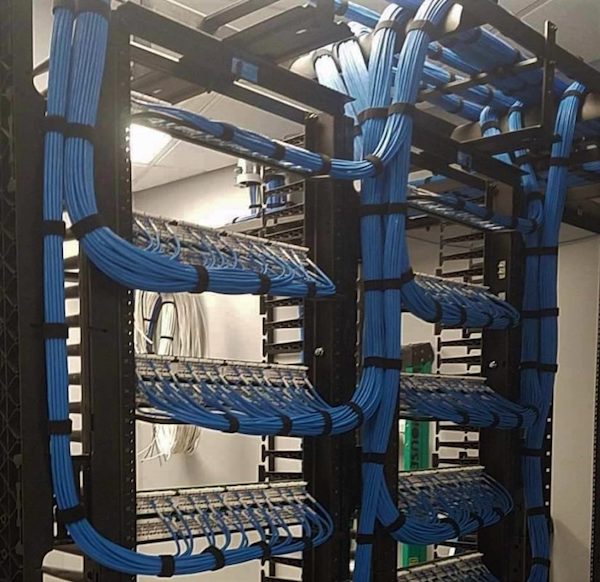Your structured cabling needs aren’t the most glamorous aspect of your business plan, but they are an important one. Businesses are realizing how a well-structured voice and data cabling installation can optimize their performance and reduce downtime from network troubleshooting.
Regardless of the size of your company, developing your new structured cabling requires a strong and reliable system and plenty of planning. To help you understand what structured cabling entails and how you can design a cabling system to best fit the needs of your business, here’s a checklist to get you started.
What Is Structured Cabling?
First things first: structured cabling, as you may already know, is a cabling system that supports a building’s telecommunications, phone lines, computing, and other systems, such as video surveillance and door access controls. A properly designed and installed system ensures that 1) you’ll experience seamless networking and communication and 2) all current and future requirements can be met (this means any hardware that is added in the future will be supported).
It’s important to know that no two structured cabling systems are alike; each one is as unique as the business that uses it. However, there are six subsystems that make up every structured cabling system:
- Entrance facilities. This is the point where the telephone company or internet access provider network connects with the business’s on-site wiring.
- Equipment rooms. This room holds equipment and wiring consolidation points that serve the users inside the building.
- Backbone cabling. These systems allow communications between the entrance facilities and the equipment rooms.
- Horizontal cabling. This cabling system connects telecommunications rooms to individual outlets or areas on the work floor.
- Telecommunications rooms. These connect between the backbone cabling and horizontal cabling.
- Work-area components. This hardware and cabling connects end-user equipment to outlets, dialing them into the network.
Your Structured Cabling Checklist
Now that you understand the role of each of the subsystems that make up structured cabling, it will be much easier to develop and design a system that works for you and the specific communication needs of your business.
Consider Your Setup
Before installing, it’s important to define your goals and how your building will affect or support those. Here are some questions to ask and consider:
- What are the specific goals of your project?
- Is there an existing structured cabling system?
- If yes, What type? Fiber, (Single or Multi-Mode?) or Copper (Cat-5e or Cat-6, twisted pair)?
- How large is your office (including the number of floors)?
- Which technologies are used for the backbone and for connecting the terminals and server?
- How many users do you need to serve?
- Do you want to go wireless? If so, will the material of the walls support this?
Perform Pre-installation Planning
How many wired devices does your business have that will need to be connected to your on-site network? You’ll need to know all of your wired endpoints, from servers to workstations. It’s also important to plan for the future by running additional cables. It's less expensive and avoids disruption to do this during the installation process than when you're already established and working in your office space.
Before you choose your vendor, there’s a bit of housekeeping you’ll need to do to ensure the cabling process can run as smoothly as possible, including verifying that:
- All permits are available for inspection
- Sites are prepared and running with power
- All components have been inspected and are on-site and ready to go
- All staff and personnel have been notified of the installation and educated with safety guidelines
- Safety rules are physically posted on-site in areas where the installation will occur
Plan for the future
It’s crucial to plan for scalability in your future — especially if you’re a new or growing business. This is essential when planning your cabling, as you may need to expand your operations and staff, or accommodate new technology in the future. When you consider not just your current needs but all the ways in which your IT may grow, you’ll have a network cabling design that grows with your business. This means that should any cabling installers need to perform maintenance in the future, they’ll be able to easily make adjustments based on the basic configuration of your system, and your network will seamlessly adapt in the meantime, without experience outages or delays.
To learn more about why cabling is such a powerful tool for your business and crucial for your future success, check out our free ebook: Structured Cabling Ahead of Technology.
If it’s time for your business to welcome a structured cabling system, this checklist will ensure that your building is as prepared as it can be — and now all you need is a team of installers. Here at Taylored, we’ll work with you to adapt your structured cabling system to the physical architecture and network needs of your business. Contact us today so that we can help you design a cabled network that will grow with you and your success into the future.

